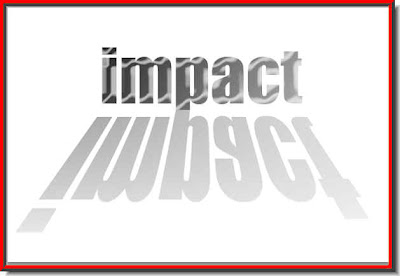
This is the effect that you can create.
The tutorial is here.
Other Photoshop tutorials are here.

This is the effect that you can create.
The tutorial is here.
Other Photoshop tutorials are here.



With the popularity of the Internet exploding, it's no wonder that more and more people are using their broadband connections to download more and more files. However, many of those people are not being able to download the files they want at an acceptable speed thanks to a sneaky problem which could be affecting your computer too.
The problem of slow Internet & download speeds is nothing new. In fact, it's a trademark of the digital revolution - having to wait extended periods of time to download your favorite files or YouTube videos. And although many people have just learned to put up with this problem, there's actually an easy way to fix it. It all boils down to a part of your computer called the 'registry'. The registry is a big database which stores all sort of settings for the software and hardware of your computer, including your Internet downloads.
Whenever you download a file from the Internet, it's details are kept in this database. Where it's located, how much it has to go and how much the file is are all constantly being kept up to date inside the registry. This is okay, but the problem is that often, Windows has so many junk files in this registry database that it takes longer and longer to find and store the files it needs. So when you are downloading files, it's constantly having to search through a pile of unwanted registry files to be able to find it.
This is a big problem because it means your downloads are constantly being hampered by a part of your computer which shouldn't make them run slow. The registry is a very important part of Windows, but it's also the cause of many different problems, such as a slow PC and constant errors. To fix this, and to speed up your downloads, you just need to be able to clear out all the junk files from the registry... and the best way to that, is to use a program called a 'registry cleaner'. These are software tools specifically designed to clean out the registry database by scanning each file that's in there and then removing any of the ones that are not needed. Depending on how many files your cleaner removes, performing a scan with this type of software can instantly make your downloads fast again.
We've found the best registry cleaner to make your downloads faster is a tool called RegAce.
Article Source: http://EzineArticles.com/?expert=James_Henry_Johnson









This is a Photo I have chosen.

And here is your image with the Halftone border. It's very simple to do and can be done quickly.
The tutorial is here.
Other photoshop tutoirals are here.

The old man seems to be spewing water from his mouth. It is just a clever blend of two images.
The tutorial is here.
Other photoshop tutorials are here.

I have opened this image of a signboard.



This is how you can fit any photo onto the signboard realistically.






By Jacob Turner
Most likely, the blue screen is the worst error in all the PC's. To tell the truth, the edition of the Windows that one is using has no influence on whether it can suffer from blue screen error or not, because all windows can experience this error. And so, this guide is not only intended for the Windows XP Blue Screen but for all the editions of the Windows.
Here are 3 Steps which can help you solve and avoid blue screen error from pestering your system. Just follow these tips and your computer will be error-free.
1. Inspect your computer's registry
All the vital data in your computer are saved in the Windows registry. The hardware, software programs installed are also registered here. But sadly, this registry entries can be corrupted and then make your system lose some important information required for the better performance of some programs or tasks.
When information went missing, the blue screen error develops and then freezes your computer. Most PC owners don't know how to repair some issues like this. On the other hand, the availability of the registry cleaner and repair software makes everything easy and manageable for the average users of computers because it is automated.
Plus, it is not hard to find, you can download it and some are even offered for free. That's a big savings for you since it's free and you'll no longer have to bring your computer to a technician as you can fix the problem yourself through the registry cleaner.
2. Spyware, adware, and virus scan
When you have already tried the first tip and it didn't solve the blue screen error, then this time, try running an adware, spyware, and virus scanner. You can also obtain this software for free in the internet. The scanning here can take a while longer compared to a scan by registry cleaner because it scan your hard drive thoroughly.
Blue screen errors are not typically caused by viruses, but it's possible. These sorts of scans are recommended to be done once a week for better results.
3. Deletion of a particular program and re-installation
Finally, if the first and second steps are not effective and haven't solved the Windows XP blue screen error, then a more drastic measures are needed.
Firstly, ensure that your windows restore function is active and you have an existing restore point set. After doing this, single out the running program/s where the blue screen usually appear. Delete and then re-install that program through your control panel.
Take note, prior to the deletion and re-installation procedure, make sure that you have the original CD or downloaded files of the program concerned. Otherwise, you will not be able to re-install the program that you have already deleted.
This simple method should repair Windows XP blue screen error permanently. Definitely, a trip to the computer repair shop is not an option if you can try and fix your computer by yourself. And this is what this article intends to do, to help you determine and find solution to some problems in your computer system.
Getting a windows blue screen error all the time? You can get rid of 100% of blue screen errors with the free blue screen download fix from http://www.FixMyComputerQuick.com/BlueScreenFix.html
Article Source: http://EzineArticles.com/?expert=Jacob_Turner